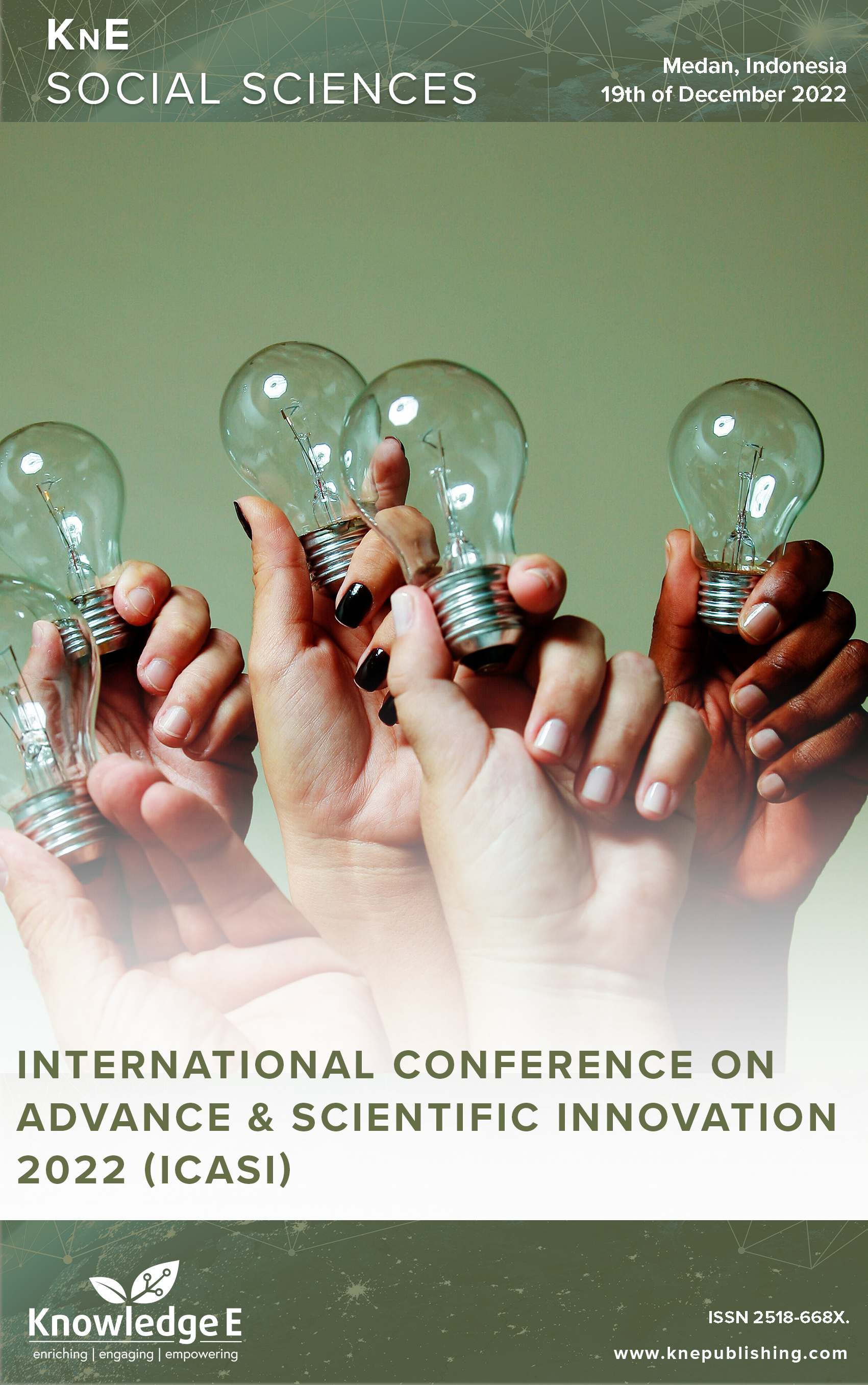Do Reforms in Indonesia Affect Economic Growth? Learn Ten Years from 1999-2008 Period
DOI:
https://doi.org/10.18502/kss.v8i9.13328Abstract
Indonesia had observed a drastic drop in its economic growth in 1998 after the monetary crisis in mid-1997 but grew back slowly starting in 1999. Since then, the Indonesian economy has been moving slowly with low growth. From this phenomenon, this study aims to see which sectors positively influence economic growth. This research uses a quantitative method in which a model of economic growth is built as a linear regression model in a time series. The economic growth model is formed based on the neoclassical production function approach from the supply side. The economic reforms in Indonesia significantly impacted economic growth, although they had a negative effect in the first ten years. Investment growth and defense spending have a positive influence on national economic growth. Meanwhile, non-defense budget growth did not affect economic growth during the ten years before and after the reform. From these results, the best way to increase Indonesia’s economic growth is to create an atmosphere that encourages both foreign and domestic investors who want to invest in Indonesia with conditions that are conducive for investors.
Keywords: economic growth, economic reforms, investment, government budget, defense expenditure
References
[2] Jawa Pos.Pertama, Sejak 1998 Pertumbuhan Ekonomi Indonesia Minus, Jawa- Pos.com, 6 August 2020.
[3] Poku K, Opoku E, Ennin PA. The influence of government expenditure on economic growth in Ghana: An Ardl approach. Cogent Econ Finance. 2022;10(1):2160036.
[4] Keynes JM. The general theory of employment, interest and money. Harcourt, Brace; 1936.
[5] Jibir A, Aluthge C, Ercolano S. Modelling the determinants of government expenditure in Nigeria. Cogent Econ Finance. 2019a;7(1):1–32.
[6] Aluthge C, Jibir A, Abdu M. Impact of government expenditure on economic growth in Nigeria, 1970-2019. CBN J Appl Stat. 2021;12(1):139–174.
[7] West R, Thompson S. Impact of military expenditures on economic development, interim synthesis report. Fletcher School of Law and Diplomacy. Medford: Tufts University; 1990.
[8] Kennedy PS. The relations of defense budget with investment: Evidence from Indonesia. Int J Econ Financial Issues. 2016 May;6 S6:115–119.
[9] Balaj D, Lani L. The impact of public expenditure on economic growth of Kosovo. Acta Universitatis Danubius. Economica. 2017;13(5): Available from: https://journals.univdanubius. ro/index.php/oeconomica/article/view/4443/4254
[10] Kunwar KB. Impact of government expenditure in economic growth of Nepal: ARDL approach. Contemp Res: An Interdiscip Acad J. 2019;3(1):33–40.
[11] Nyarko-Asomani A, Bhasin VK, Aglobitse PB. Government capital expenditure, recurrent expenditure and economic growth in Ghana. Ghanaian J Econ. 2019;7(1):44–70. Available from: https://hdl.handle.net/10520/EJC-1b2f6ea97f
[12] Aydin C, Esen Ö. Does too much government spending depress the economic development of transition economies? Evidences from dynamic panel threshold analysis. Appl Econ. 2019;51(15):1666–1678.
[13] Okoye LU, Omankhanlen AE, Okoh JI, Urhie E, Ahmed A. Government expenditure and economic growth: The case of Nigeria. Proceedings of SOCIOINT; 2019. pp.1184–1194.
[14] Barlas AW. The impact of government expenditure on economic growth in Afghanistan. J Econ Bus. 2020;3(2). https://doi.org/10.31014/aior.1992.03.02.234
[15] Ogar A, Eyo IE, Arikpo OF. Public expenditure and economic growth in Nigeria: VAR approach. Eur J Econ Financial Res. 2019;3(3):36–60.
[16] Maingi JN. The impact of government expenditure on economic growth in Kenya: 1963-2008. Adv Econ Bus. 2010;5(12):635–662.
[17] Wang Z, Asghar MM, Zaidi SA, Wang B. Dynamic linkages among CO2 emissions, health expenditures, and economic growth: Empirical evidence from Pakistan. Environ Sci Pollut Res Int. 2019 May;26(15):15285–15299. Available from: https://link.springer.com/article/10.1007/s11356-019-04876-x
[18] Odhiambo NM, Nyasha S. Public expenditure and economic growth in Kenya: A multivariate dynamic causal linkage. 2018;24895.
[19] Havi ED, Enu P, Osei-Gyimah F, Attah-Obeng P, Opoku CD. Macroeconomic determinants of economic growth in Ghana: Cointegration approach. Eur Sci J. 2013;9(19).
[20] Bose N, Haque ME, Osborn DR. Public expenditure and economic growth: A disaggregated analysis for developing countries. Manch Sch. 2007;75(5):533–556.
[21] Nketiah-Amponsah E. Public spending and economic growth: Evidence from Ghana (1970–2004). Dev South Afr. 2009;26(3):477–497.
[22] Afonso A, Ibraimo Y. The macroeconomic effects of public debt: An empirical analysis of Mozambique. Appl Econ. 2020;52(2):212–226.
[23] Barro RJ. Government spending in a simple model of endogenous growth. J Polit Econ. 1990;98(5, Part 2):S103–S125.
[24] Feder G. On exports and economic growth. J Dev Econ. 1983;12(1-2):59–73.
[25] Denison EF. Trends in American economic growth, 1929-1982. Washington (DC): Brookings Institution; 1985.
[26] Ram R. Government size and economic growth: A new framework and some evidence from cross-section and time-series data. Am Econ Rev. 1986;76(1):191–203.
[27] Kennedy PS, Tobing SJ, Lumbantoruan R, Tampubolon E, Heatubun AB. Mathematical model: The long-term effects of defense expenditure on economic growth and the criticism. IOP Conf Series: J Phys: Conf Series. 2018;1114:012118. https://doi.org/10.1088/1742-6596/1114/1/012118
[28] Kennedy PSJ. Applied mathematics model: The effect of national defense on economic growth seen from the supply side. J Elect Comp Net Appl Math. 2022;02(03).
[29] Mintz A, Huang C. Defence expenditures, economic growth and the peace dividend. Am Polit Sci Rev. 1990;84(4):1283–1293.
[30] Mintz A, Huang C. Guns versus butter: The Indirect Link. Am J Pol Sci. 1991;35(3):738– 757.
[31] Cornes R, Sandler T. The theory of externalities, public goods, and club goods. Cambridge: Cambridge University Press; 1986.
[32] WDI. World Development Indicator. https://databank.worldbank.org/source/worlddevelopment- indicators

